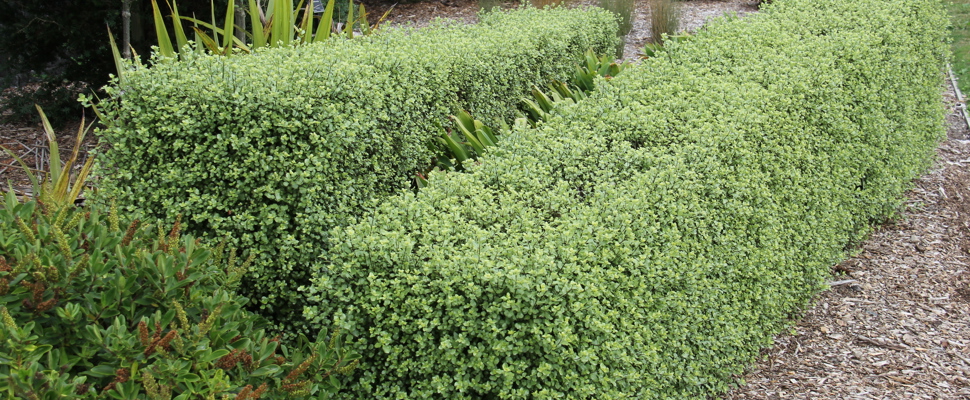
Hedges
Hedges are created by planting multiple specimens in a row. Typically, a single plant type is used, but some prefer mixed hedges. Many native plants work well as hedges. You can even use totara (Podocarpus totara) as a hedge, but you will need to prune it regularly.
Uses
Hedges offer privacy and act as a windbreak, provide a backdrop for flowering plants and demarcate different parts of a garden. Small hedges can form edges to garden beds or paths. Some species are also enjoyed for their flowers.
What to grow
Before you plant a hedge, think about its intended purpose, the type of plants you’d like, and how much you are prepared to maintain it. Some grow more vigorously than others! Plants we recommend are suitable for clipping, meaning they have small leaves, recover well from pruning and hold their foliage to ground level. They are also disease resistant, healthy, hardy and long-lived.
Take a walk in the Native Plant Ideas garden to see a range of hedge options.
For further suggestions, visit our 'Plants for Auckland' database for the easiest hedge plants to grow in Auckland. For further suggestions, download our Native hedges for Auckland or Exotic hedges for Auckland brochures.
How to plant
- Prepare the planting site by removing weeds and, if required, incorporating compost.
- Plant your hedge in autumn so that the roots can establish during the winter months.
- Water plants well before and after planting.
- Use a string to ensure a straight line and, if planting in a windy location, stake plants.
- Mulch with organic matter
- The optimum spacing between plants in a hedge varies according to the plant type. Too far apart and they take a long time to meet up; too close, and they compete with each other for moisture and nutrients. For example, space griselinias and Camellia sasanqua 90cm apart; space Teucrium fruticans 75cm apart; space Hebe ‘Wiri Mist’ and most lavender 45cm apart.
How to grow
- In the first year or two trim the sides of the plant until the desired height is reached.
The tops may require an occasional trim to encourage the plants to become bushy.
The ideal shape for many hedges is slightly wider at the base than at the top to ensure maximum light reaches the lower foliage and prevents it from dropping. - Flowering hedges, such as Camellia sasanqua, should be pruned immediately after flowering. Hedges grown for their foliage are best pruned in late winter. August is a good time to trim many hedges as new growth soon emerges, giving an attractive fresh appearance.
- Apply a balanced fertiliser in spring and rake it in.
Top image: Pittosporum 'Wrinkle Blue'